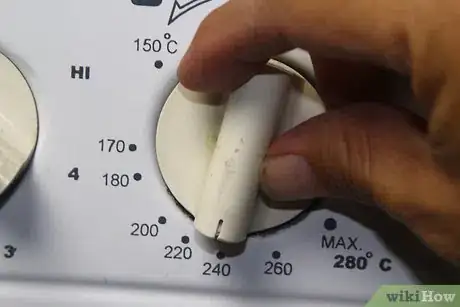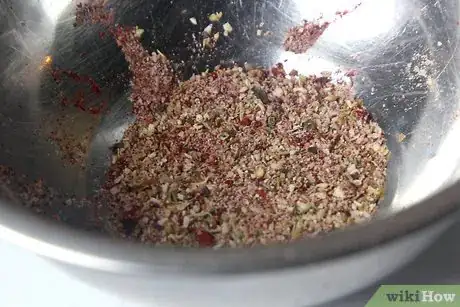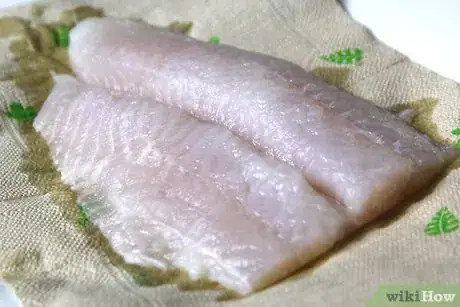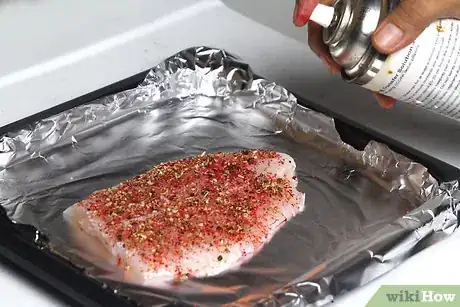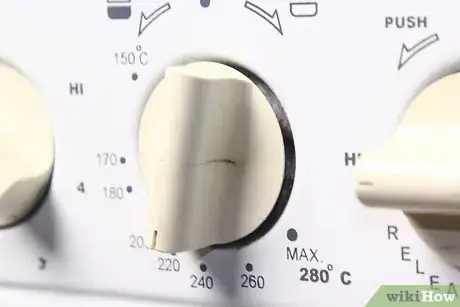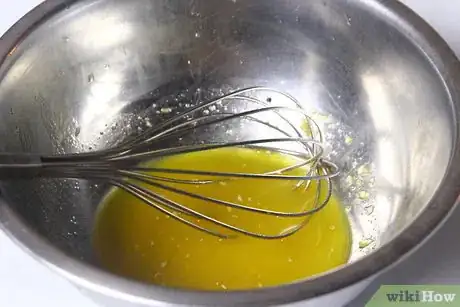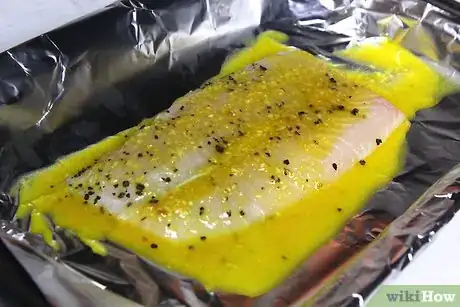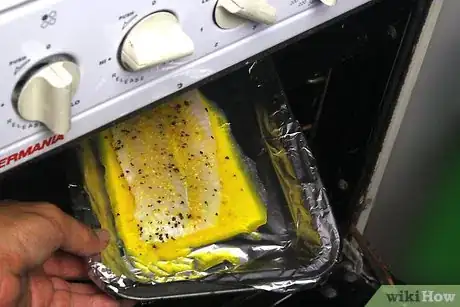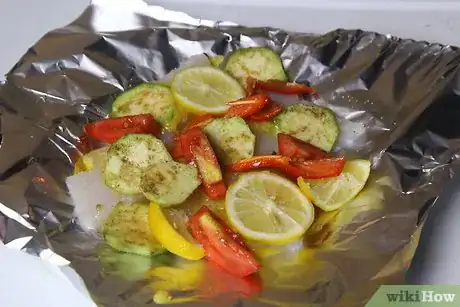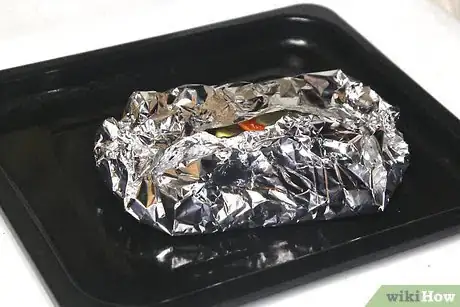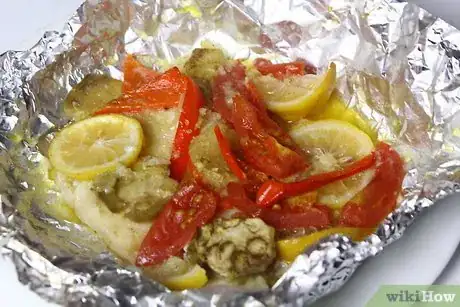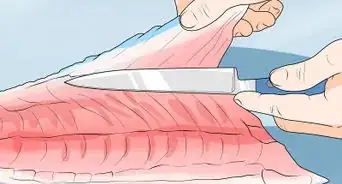This article was co-authored by wikiHow staff writer, Jessica Gibson. Jessica Gibson is a Writer and Editor who's been with wikiHow since 2014. After completing a year of art studies at the Emily Carr University in Vancouver, she graduated from Columbia College with a BA in History. Jessica also completed an MA in History from The University of Oregon in 2013.
This article has been viewed 222,148 times.
Learn more...
Frozen tilapia is a great option for a quick weeknight dinner. Mix together a fast blackening seasoning and coat the frozen fillets with the rub. Bake the tilapia until the fish is browned and slightly crispy on the edges. Or cook the frozen fillets while you make an easy browned butter and lemon sauce. Pour the sauce over the fish right before serving. For a fun way to eat dinner, place the frozen tilapia in foil packets along with sliced vegetables. The fish and vegetables will steam as they cook. Just open the packets and enjoy a complete meal.
Ingredients
- 1 pound (453 g) frozen tilapia fillets
- 4 tablespoons (60 ml) extra-virgin olive oil, divided
- 3 tablespoons (20 g) paprika
- 1 teaspoon (5.5 g) salt
- 1 tablespoons (6.5 g) onion powder
- 1 teaspoon (2 g) black pepper
- 1/4 to 1 teaspoon (0.5 to 2 g) cayenne pepper
- 1 teaspoon (2 g) dried thyme
- 1 teaspoon (2 g) dried oregano
- 1/2 teaspoon (1 g) garlic powder
Makes 4 servings
- 1/4 cup (56 g) unsalted butter, melted
- 3 cloves garlic, minced
- 2 tablespoons (30 ml) freshly squeezed lemon juice
- Zest of 1 lemon
- 4 (6 ounce or 170 g) frozen tilapia fillets
- Kosher salt and freshly ground black pepper, to taste
- 2 tablespoons (7.5 g) chopped fresh parsley leaves
Makes 4 servings
- 4 tilapia fillets (about 1 pound or 453 g)
- 1 large lemon, thinly sliced
- 2 tablespoons (28 g) butter
- 1 zucchini, thinly sliced
- 1 bell pepper
- 1 tomato, chopped
- 1 tablespoon (8.5 g) capers
- 1 tablespoon (15 ml) olive oil
- 1 teaspoon (5.5 g) salt
- 1/4 teaspoon (0.5 g) black pepper
Makes 4 servings
Steps
Baking Blackened Tilapia without Thawing
-
1Preheat the oven to 450 °F (232 °C) and prepare a sheet pan. Line the pan with aluminum foil. Drizzle 2 tablespoons (30 ml) of the extra-virgin olive oil over the foil and brush it evenly with a pastry brush. Set the pan aside while you prepare the fish.[1]
-
2Mix a blackening seasoning in a small bowl. Keep in mind that this will make more than you need for the recipe, but you can store it in an airtight container for several months. For the seasoning, stir together:[2]
- 3 tablespoons (20 g) paprika
- 1 teaspoon (5.5 g) salt
- 1 tablespoons (6.5 g) onion powder
- 1 teaspoon (2 g) black pepper
- 1/4 to 1 teaspoon (0.5 to 2 g) cayenne pepper
- 1 teaspoon (2 g) dried thyme
- 1 teaspoon (2 g) dried oregano
- 1/2 teaspoon (1 g) garlic powder
Advertisement -
3Rinse and dry the frozen tilapia. Take out 1 pound (453 g) of frozen tilapia fillets and rinse them under cold water. Pat the fish dry with paper towels and lay them on the prepared sheet pan.[3]
-
4Season the frozen tilapia with oil and the blackening mix. Brush the fillets with the remaining 2 tablespoons (30 ml) of olive oil. Take 3 tablespoons (24 g) of the blackening seasoning and sprinkle both sides of the fillets with it. Use your fingers to rub the seasoning into the tilapia.[4]
-
5Spray the tilapia with cooking spray and bake it for 20 to 22 minutes. If you don't have cooking spray, use a pastry brush to give the fillets a light coating of extra-virgin olive or canola oil. Put the fish in the preheated oven and cook them until they turn dark brown.[5]
-
6Remove the fish and serve it with tartar sauce. Test to see if the fish is finished cooking by dragging a fork across the center of a fillet. The fish is done if it flakes easily. If not, return the fish to the oven for another 5 minutes. Serve the blackened tilapia with tartar sauce, hushpuppies, and coleslaw.[6]
- Refrigerate the tilapia for 3 to 4 days in an airtight container.
Cooking Frozen Lemon Butter Tilapia
-
1Preheat the oven to 425 °F (218 °C) and grease a baking dish. Get out a 9 x 13-inch (22 x 33-cm) baking dish and spray it with cooking spray to prevent the fish from sticking. Set the dish aside while you prepare the fish.[7]
- If you don't have cooking spray, brush a little melted butter or olive oil over the bottom of the dish.
-
2Whisk the melted butter, garlic, and lemon together. Place 1/4 cup (56 g) of unsalted butter into a small microwave-safe bowl. Microwave the butter for about 30 seconds so it melts. Remove it from the microwave and whisk in 3 cloves of minced garlic, 2 tablespoons (30 ml) of freshly squeezed lemon juice, and the zest from 1 lemon.[8]
-
3Season the frozen tilapia and arrange it in the baking dish. Remove 4 tilapia fillets from the freezer and sprinkle them with salt and ground pepper to taste. Lay the fish in the prepared baking dish and pour the seasoned butter over it.[9]
-
4Bake the fish for 20 to 30 minutes. Put the baking dish in the preheated oven and cook the tilapia until it's completely cooked throughout. To test if the fish is done, drag a fork through the center of a fillet. If the fish is cooked, it should flake easily. If not, return the fish to the oven and bake it for another 5 minutes before checking again.[10]
- If you want to use fresh or thawed tilapia, reduce the cooking time to 10 to 12 minutes.
-
5Garnish and serve the lemon butter tilapia. Remove the fish from the oven and sprinkle it with 2 tablespoons (7.5 g) of freshly chopped parsley leaves. Serve the hot fish with extra wedges of lemon, steamed rice, and roasted vegetables.[11]
- Store the leftover fish in an airtight container in the refrigerator for 3 to 4 days.
Making Tilapia with Vegetables in Foil Packets
-
1Preheat the oven to 425 °F (218 °C) and prepare the foil. Get out 4 sheets of heavy duty aluminum foil that are 20-inches (50-cm) long and lay them on your work surface. Spray the non-shiny side of the foil with cooking spray or brush them with a little olive oil to keep the fish from sticking.
- If you're using regular foil, you may need to double the the foil so it's sturdy enough to contain the tilapia and vegetables.
-
2Rinse and dry the frozen tilapia. Get out 4 frozen fillets of tilapia and run them under cold water. Set them on a plate and use paper towels to pat them dry. If you're using thawed fish, you don't need to rinse and dry the fish.
-
3Arrange the fish on the foil with butter and lemon slices. Lay 1 fillet of frozen tilapia in the center of 1 piece of foil. Repeat this for each fillet. Sprinkle the fish with salt and pepper according to your taste. Get out 2 tablespoons (28 g) of butter and slice them into thin pieces. Top each of the fillets with some of the butter and 2 slices of the lemon.
-
4Mix together the chopped vegetables with olive oil and seasonings. Put 1 thinly sliced zucchini, 1 sliced bell pepper, 1 chopped tomato, and 1 tablespoon (8.5 g) of drained capers into a mixing bowl. Drizzle 1 tablespoon (15 ml) of olive oil over the vegetables and sprinkle 1 teaspoon (5.5 g) of salt and 1/4 teaspoon (0.5 g) of black pepper over them. Stir the vegetables until they're combined.
- Substitute your favorite vegetables for any of these listed here. For example, use a summer squash instead of a zucchini or tomato.
-
5Top the fish with the vegetable mixture and seal the foil packets. Scoop 1/4 cup (40 g) of the vegetable mixture on top of each fillet of fish. Fold both of the long sides of foil up towards the middle. Fold the sides together to seal the the foil in the center. Roll together the ends of the packet to seal it completely shut.
-
6Bake the foil packets for 30 to 40 minutes. Set each foil packet directly on the oven rack. Cook the packets for 30 minutes and remove them from the oven to check if the fish is cooked. Carefully open a packet to let the steam escape and drag a fork over the center of the fish fillet. If it's finished cooking, it should flake easily. If not, reseal the packet and return it to the oven to cook for 5 to 10 more minutes.[12]
-
7Remove and serve the tilapia with vegetables. Turn off the oven and remove all of the foil packets from the oven. If you want to serve the fish and vegetables directly from the packet, set 1 packet on each serving plate. Let your guests open their own foil packets.[13]
- Transfer the leftover fish and vegetables to an airtight container. Store the leftovers for 3 to 4 days in the refrigerator.
Things You'll Need
Blackened Tilapia
- Measuring cups and spoons
- Small bowl
- Spoon
- Sheet pan
- Aluminum foil
- Pastry brush
Lemon Butter Tilapia
- Measuring cups and spoons
- 9 x 13-inch (22 x 33-cm) baking dish
- Cooking spray
- Small microwave-safe bowl
- Whisk
- Fork
- Knife and cutting board
Tilapia with Vegetables in Foil Packets
- Heavy duty aluminum foil
- Cooking spray
- Mixing bowl
- Measuring cups and spoons
- Knife and cutting board
- Fork
- Spoon
References
- ↑ https://www.101cookingfortwo.com/oven-baked-blackened-tilapia/
- ↑ https://www.101cookingfortwo.com/oven-baked-blackened-tilapia/
- ↑ https://www.101cookingfortwo.com/oven-baked-blackened-tilapia/
- ↑ https://www.101cookingfortwo.com/oven-baked-blackened-tilapia/
- ↑ https://www.101cookingfortwo.com/oven-baked-blackened-tilapia/
- ↑ https://www.101cookingfortwo.com/oven-baked-blackened-tilapia/
- ↑ https://damndelicious.net/2016/04/30/baked-lemon-butter-tilapia/
- ↑ https://damndelicious.net/2016/04/30/baked-lemon-butter-tilapia/
- ↑ https://damndelicious.net/2016/04/30/baked-lemon-butter-tilapia/
About This Article
To bake frozen tilapia, melt some butter and whisk in minced garlic, lemon juice, and lemon zest. Then, season your tilapia with salt, pepper, and the butter mixture. Lay your fillets in a greased 9 by 13-inch baking dish. Finally, bake your tilapia at 425°F for 20-30 minutes, or until your fish flakes easily. Alternatively, rinse and dry your fillets, and put each one on a piece of foil with salt, pepper, butter, and lemon. Then, add some chopped vegetables drizzled with olive oil, close up the foil packets, and bake them for 30-40 minutes at 425°F. To learn how to make blackened tilapia with your frozen fillets, keep reading!
